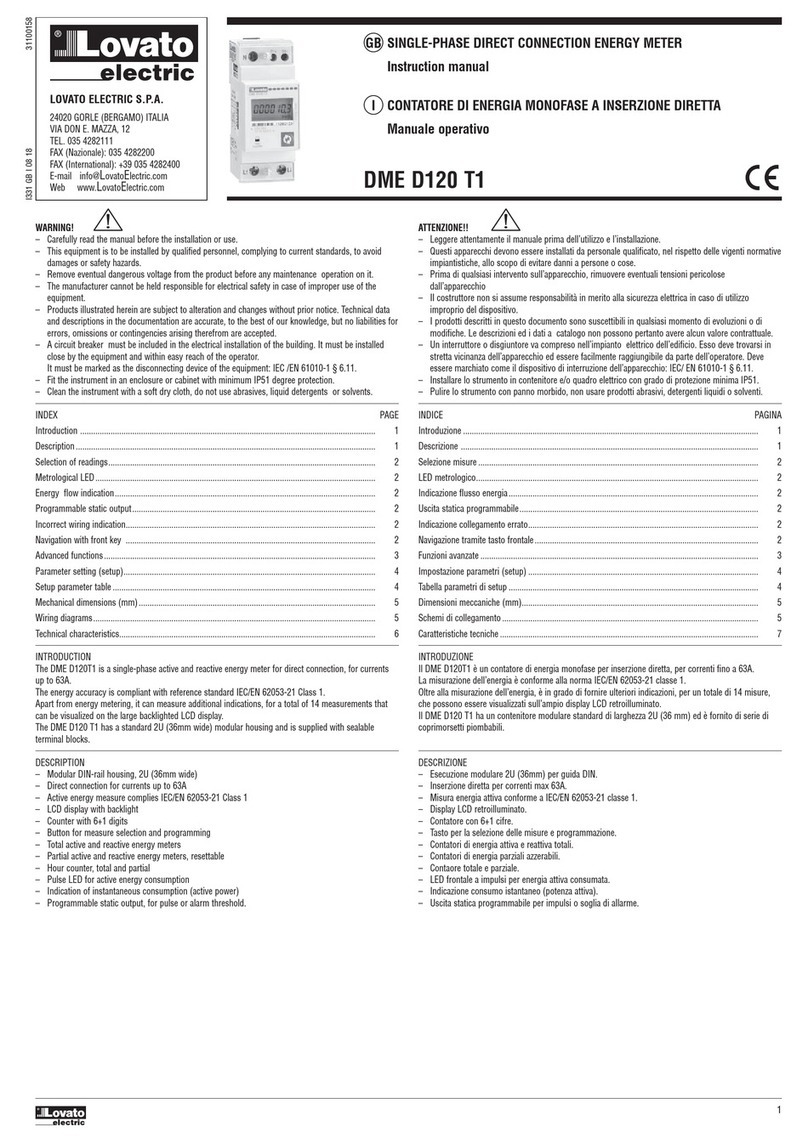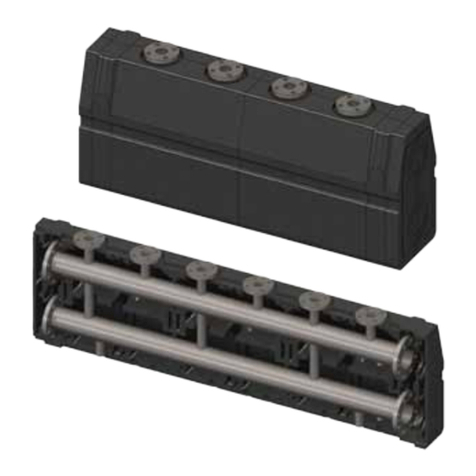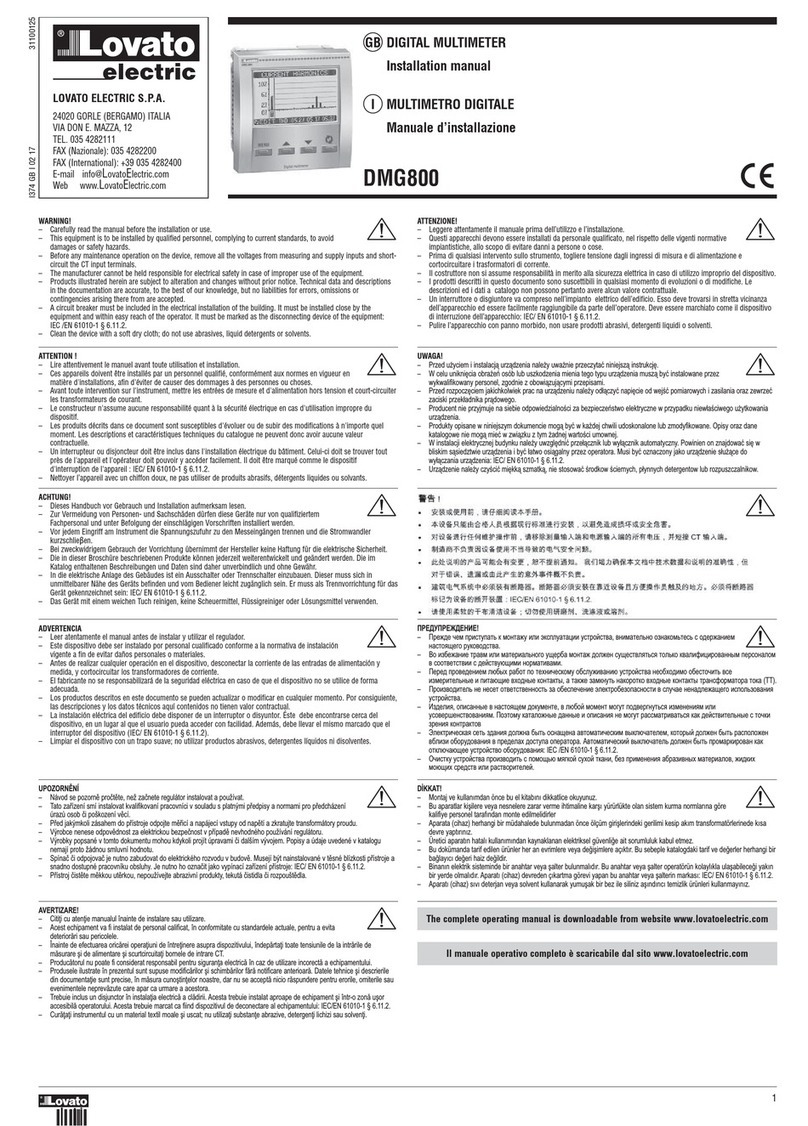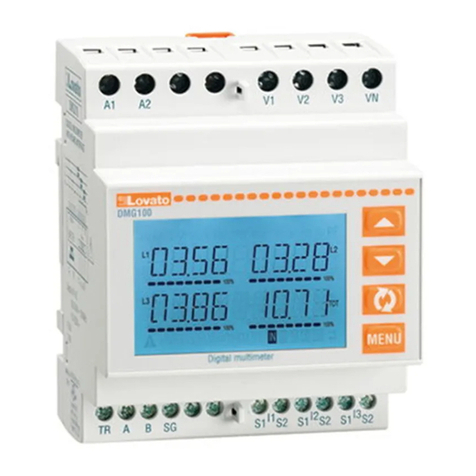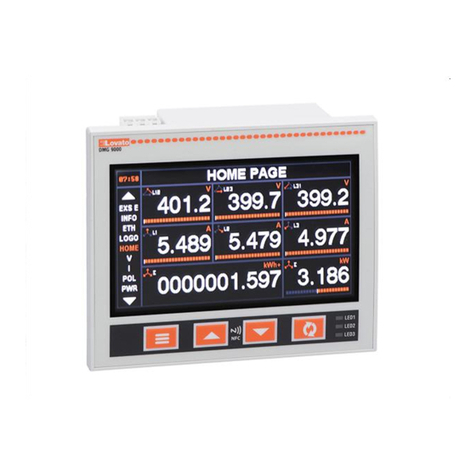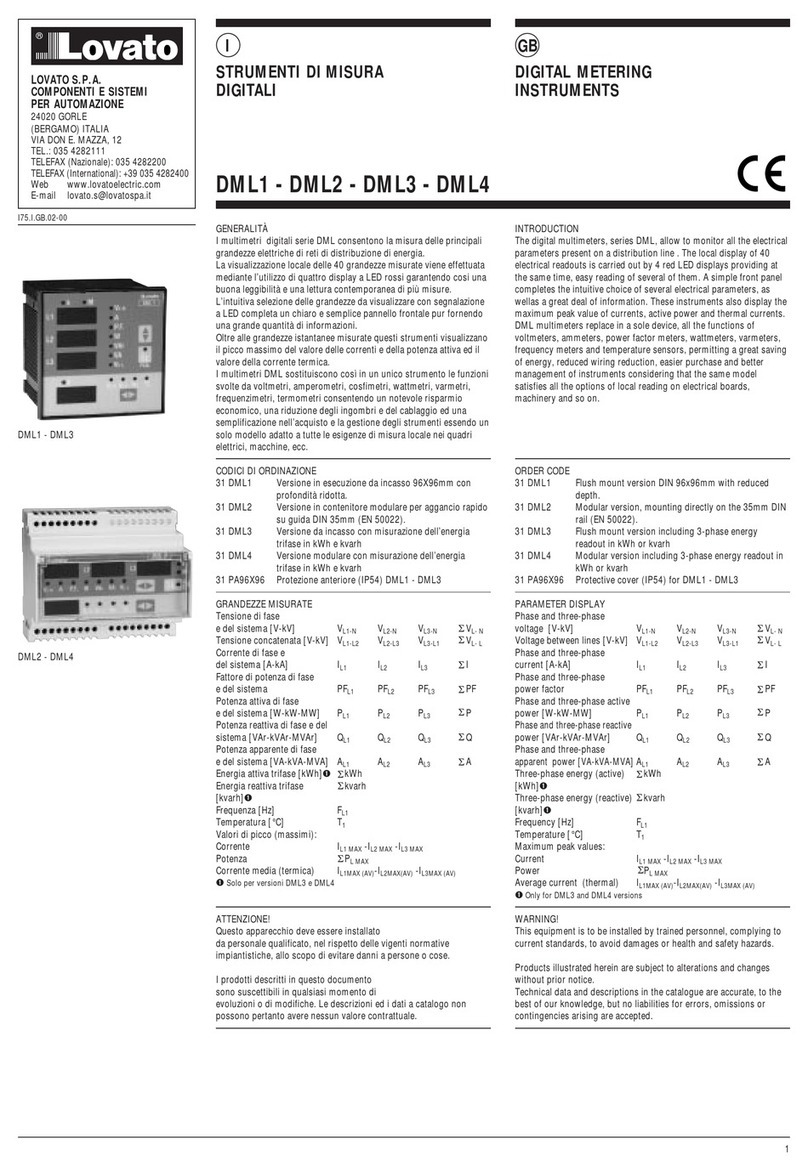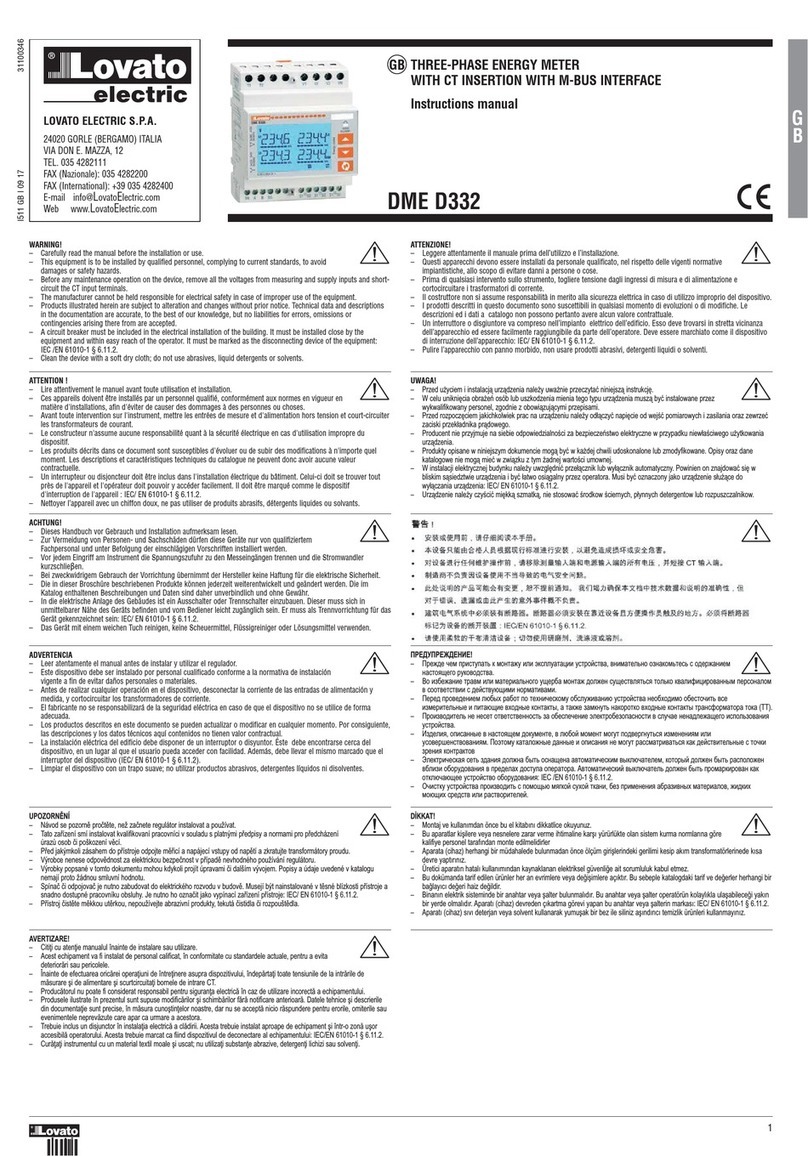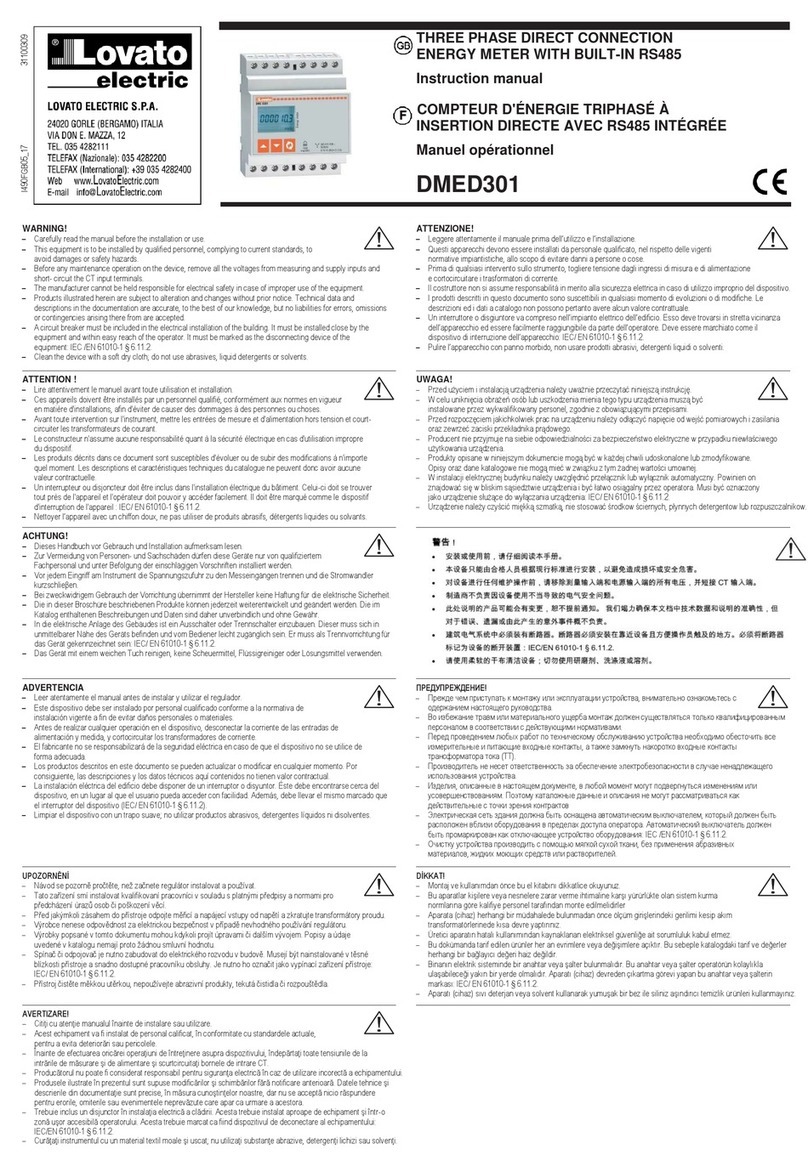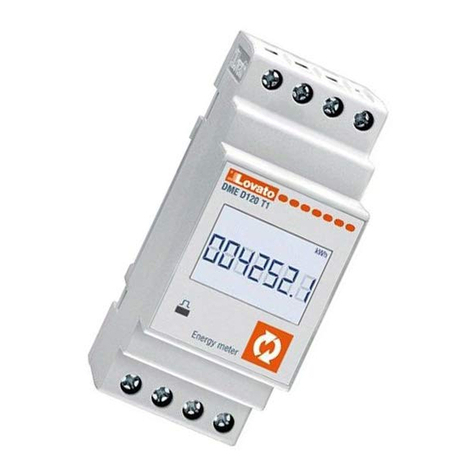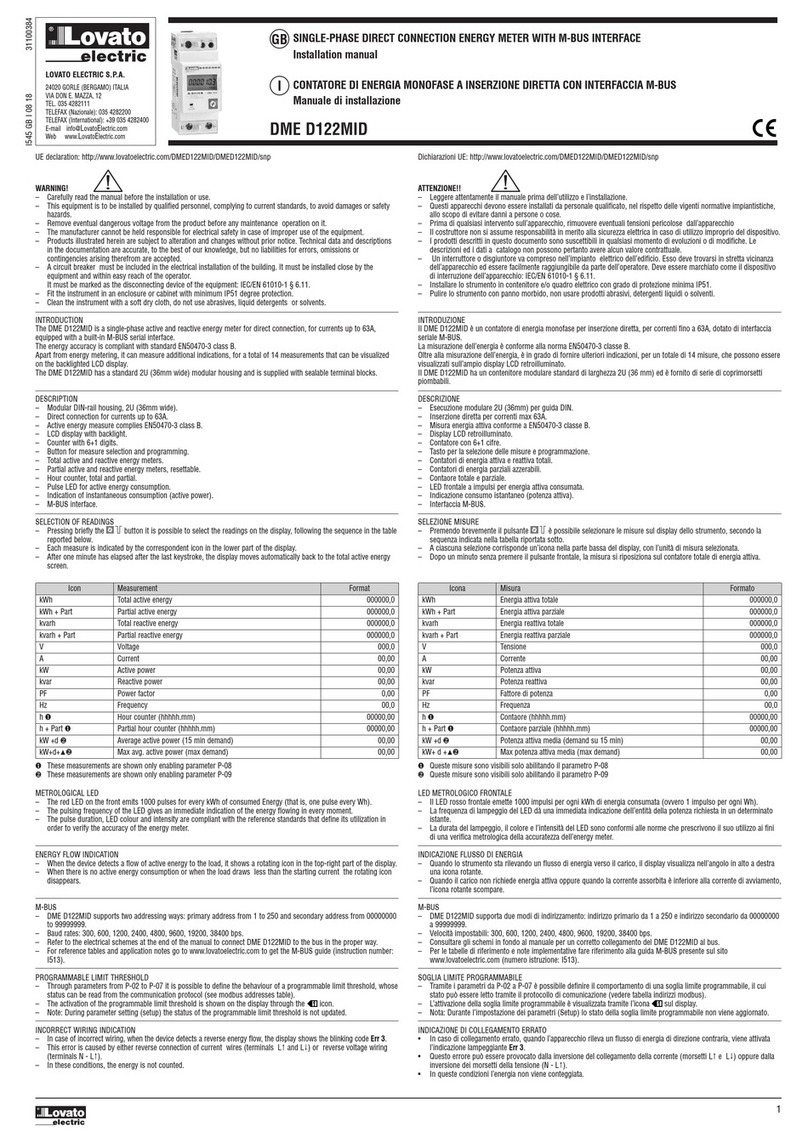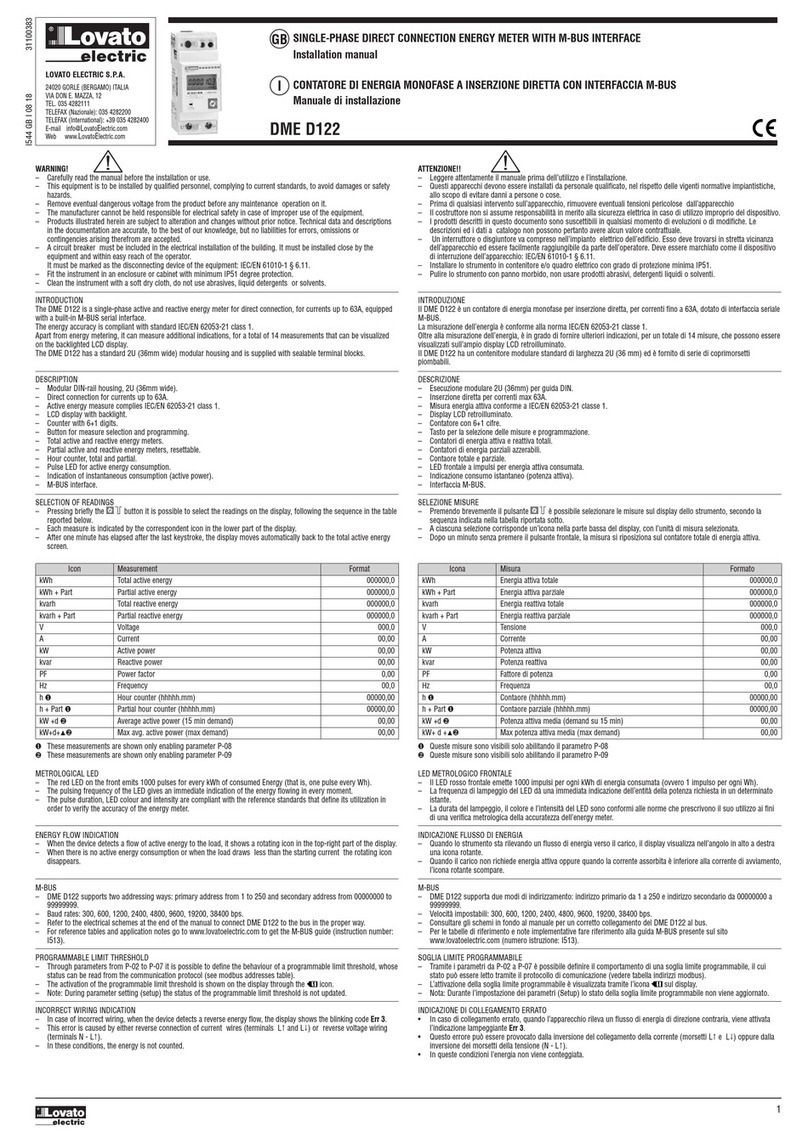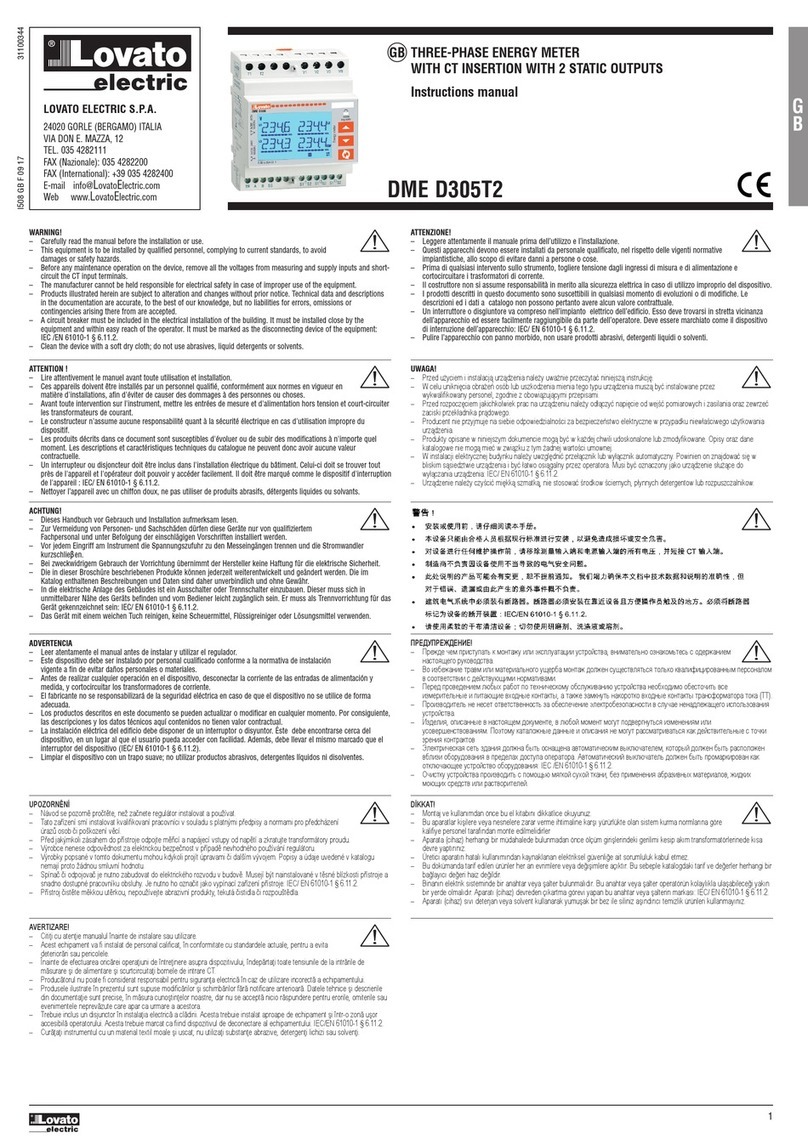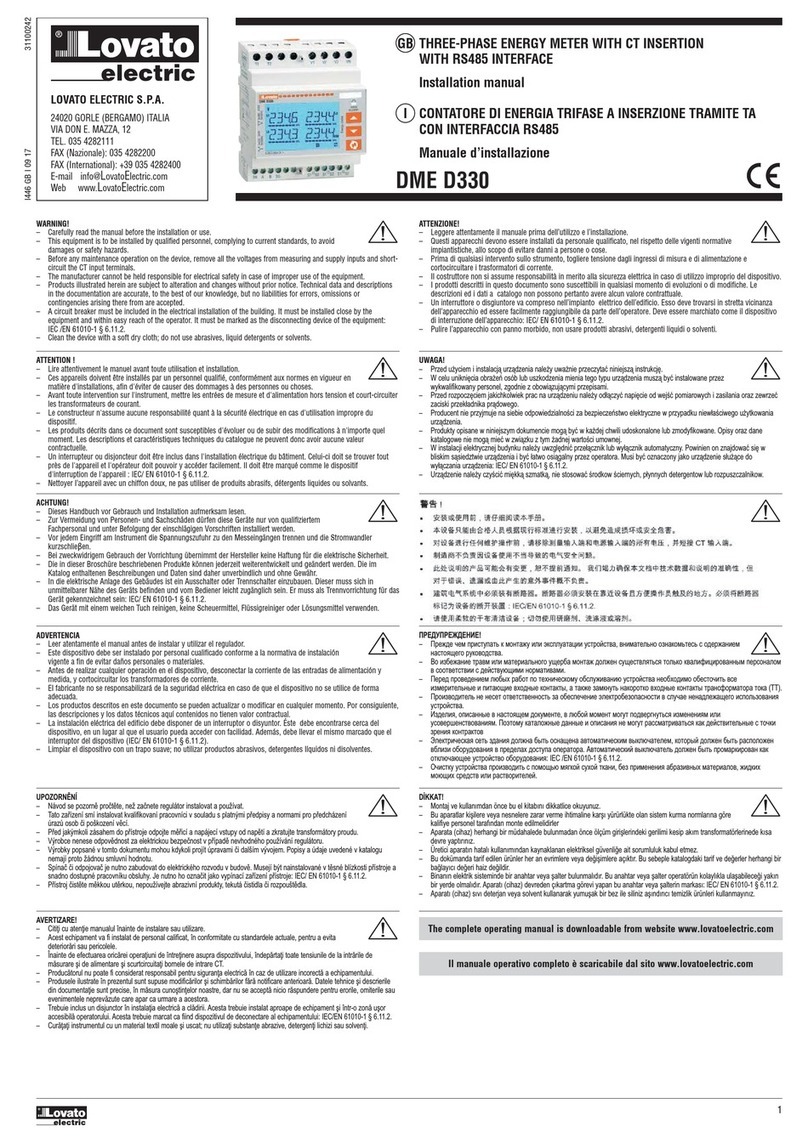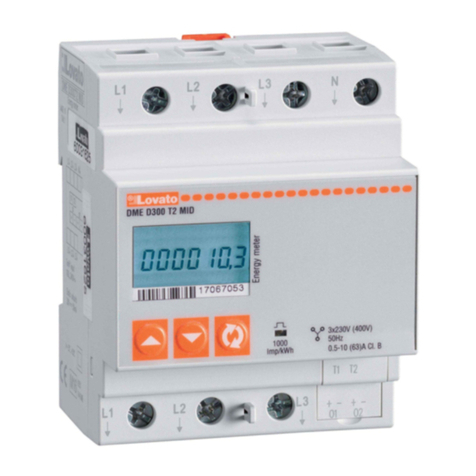
Doc: MHIT104B0208.doc 20/07/2010 p. 5 / 30
Tabella delle pagine del display
Selezione con §e¨Selezione con icone
Nr PAGINE SOTTO-PAGINE
1 TENSIONI - CORRENTI
V(L1-L2), V(L2-L3), V(L3-L1), I(L1), I(L2), I(L3) HI LO AV
2 TENSIONI CONCATENATE
V(L1-L2), V(L2-L3), V(L3-L1), V(LL)EQV HI LO AV GR
3 TENSIONI DI FASE
V(L1-N), V(L2-N), V(L3-N), V(L-N)EQV HI LO AV GR
4 CORRENTI DI FASE E DI NEUTRO
I(L1), I(L2), I(L3), I(N) calcolata HI LO AV MD GR
5 POTENZA ATTIVA
P(L1), P(L2), P(L3), P(TOT) HI LO AV MD GR
6 POTENZA REATTIVA
Q(L1), Q(L2), Q(L3), Q(TOT) HI LO AV MD GR
7 POTENZA APPARENTE
S(L1), S(L2), S(L3), S(TOT) HI LO AV MD GR
8 FATTORE DI POTENZA
PF(L1),PF(L2),PF(L3),PF(EQ) HI LO AV GR
9 COSFI
COSFI(L1),COSFI(L2),COSFI(L3) HI LO AV GR
10 NEUTRO
V(N-GND), I(N), THD-I (N) HI LO AV GR
11 FREQUENZA – ASIMMETRIA
F, ASY(VLL), ASY(VLN), ASY(I) HI LO AV
12 DIST. ARMONICA TENSIONI L-L
THD-V(L1-L2), THD-V(L2-L3), THD-V(L3-L1) HI LO AV GR
13 ANALISI ARM. TENSIONI L-L
H2…63 V(L1-L2)-V(L2-L3)-V(L3-L1)
14 FORMA D’ONDA TENSIONI L-L L1-L2 L2-L3L3-L1
15 DIST. ARMONICA TENSIONI L-N
THD-V(L1),THD-V(L2),THD-V(L3) HI LO AV GR
16 ANALISI ARMONICA TENSIONI L-N
H2…63 V(L1)-V(L2)-V(L3)
17 FORMA D’ONDA TENSIONI L-N L1-N L2-N L3-N
18 DIST. ARMONICA CORRENTE
THD-I(L1), THD-I(L2) THD-I(L3) HI LO AV GR
19 ANALISI ARMONICA CORRENTE
H2…63 I(L1)-I(L2)-I(L3)
20 FORMA D’ONDA CORRENTE L1 L2 L3 N
21
CONTATORI DI ENERGIA
kWh+(TOT), kWh-(TOT), kvarh+(TOT), kvarh-
(TOT), kVA(TOT)
PARZIALI
22 TARIFFAZIONE ENERGIA TAR1 … TAR8
23 CONSUMO MENSILE ENERGIA GEN … DIC
24 GRAFICO TREND
25 CONTAORE
Hr(TOT), Hr(Parziale)
26 MODULI ESPANSIONE
27 CONTATORI CNT1 … CNT4
28 INGRESSI ANALOGICI AIN1 … AIN8
29 USCITE ANALOGICHE AOU1 … AOU8
30 SOGLIE LIMITE LIM1 … LIM16
31 LOGICA BOOLEANA BOO1 … BOO8
32 ALLARMI ALA1 … ALA16
33 EVENTI EVENTI 1…100
34 RACCOLTA DATI
35 QUALITA’ ENERGIA SETTIMANALE SETT 1..52 / ULTIMA
36 QUALITA’ ENERGIA MENSILE
37 QUALITA’ ENERGIA ANNUALE
38 CONTATORI QUALITA’ ENERGIA
39 CATTURA FORME D’ONDA Q.E. ONDA 1..10
40 DATA E ORA
41 INFO-REVISIONI-SERIAL NR.
MODELLO,REV SW, REV HW,Nr. SERIE
42 LOGO
PAGINA UTENTE 1
PAGINA UTENTE 2
PAGINA UTENTE 3
PAGINA UTENTE 4
•Nota: Alcune delle pagine elencate sopra potrebbero non essere
visualizzate, se la funzione visualizzata non è abilitata. Ad esempio se non
viene programmato alcun allarme, la corrispondente pagina non viene
visualizzata.
Table of display pages
Selection with §and ¨Selection with icons
Nr PAGES SUB-PAGES
1 VOLTAGE - CURRENT
V(L1-L2), V(L2-L3), V(L3-L1), I(L1), I(L2), I(L3)
HI LO AV
2 PHASE-TO-PHASE VOLTAGES
V(L1-L2), V(L2-L3), V(L3-L1), V(LL)EQV HI LO AV GR
3 PHASE-TO-NEUTRAL VOLTAGES
V(L1-N), V(L2-N), V(L3-N), V(L-N)EQV HI LO AV GR
4 PHASE AND NEUTRAL CURRENTS
I(L1), I(L2), I(L3), I(N) calculated HI LO AV MD GR
5 ACTIVE POWER
P(L1), P(L2), P(L3), P(TOT) HI LO AV MD GR
6 REACTIVE POWER
Q(L1), Q(L2), Q(L3), Q(TOT) HI LO AV MD GR
7 APPARENT POWER
S(L1), S(L2), S(L3), S(TOT) HI LO AV MD GR
8 POWER FACTOR
PF(L1),PF(L2),PF(L3),PF(EQ) HI LO AV GR
9 COS-PHI
COS-PHI(L1), COS-PHI(L2), COS-PHI(L3) HI LO AV GR
10 NEUTRAL
V(N-GND), I(N), THD-I (N) HI LO AV GR
11 FREQUENCY-ASYMMETRY
F, ASY(VLL), ASY(VLN), ASY(I) HI LO AV
12 PH-PH VOLTAGE HARMONIC DISTORTION
THD-V(L1-L2), THD-V(L2-L3), THD-V(L3-L1) HI LO AV GR
13 PH-PH VOLTAGE HARMONIC ANALYSIS
H2…63 V(L1-L2)-V(L2-L3)-V(L3-L1)
14 PH-PH VOLTAGE WAVEFORMS L1-L2 L2-L3 L3-L1
15 PH-N VOLTAGE HARMONIC DISTORTION
THD-V(L1),THD-V(L2),THD-V(L3) HI LO AV GR
16 PH-N VOLTAGE HARMONIC ANALYSIS
H2…63 V(L1)-V(L2)-V(L3)
17 PH-N VOLTAGE WAVEFORMS L1-N L2-N L3-N
18 CURRENT HARMONIC DISTORTION
THD-I(L1), THD-I(L2) THD-I(L3) HI LO AV GR
19 CURRENT HARMONIC ANALYSIS
H2…63 I(L1)-I(L2)-I(L3)
20 CURRENT WAVEFORMS L1 L2 L3 N
21
ENERGY METERS
kWh+(TOT), kWh-(TOT), kvarh+(TOT), kvarh-
(TOT), kVA(TOT)
PARTIAL
22 ENERGY TARIFFS TAR1 … TAR8
23 MONTHLY ENERGY CONSUMPTION JAN … DEC
24 TREND GRAPH
25 HOUR COUNTER
Hr(TOT), Hr(Partial)
26 EXPANSION MODULES
27 COUNTERS CNT1 … CNT4
28 ANALOG INPUTS AIN1 … AIN8
29 ANALOG OUTPUTS AOU1 … AOU8
30 LIMIT THRESHOLDS LIM1 … LIM16
31 BOOLEAN LOGIC BOO1 … BOO8
32 ALARMS ALA1 … ALA16
33 EVENTS EVNT1…100
34 DATA LOGGER
35 WEEKLY ENERGY QUALITY WEEKS 1..52 / LAST
36 MONTHLY ENERGY QUALITY
37 YEARLY ENERGY QUALITY
38 ENERGY QUALITY COUNTERS
39 ENERGY QUALITY WAVEFORM CAPTURE WAVE 1..10
40 TIME AND DATE
41 INFO-REVISION-SERIAL NO..
MODEL, REV SW, REV HW, SER. No.
LOGO
USER-DEFINED PAGE 1
USER-DEFINED PAGE 2
USER-DEFINED PAGE 3
USER-DEFINED PAGE 4
•Note: Some of the pages listed above may not be available if the function
that they must view is not enabled. For instance, if no alarms have been
defined, then the Alarm page will not be shown.
